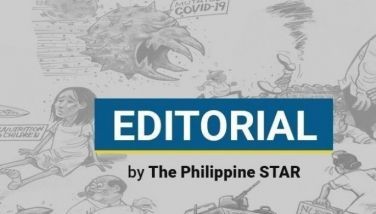Why not?

Yesterday was a day of “Why Not’s” for me. While doing two episodes of AGENDA on Cignal TV, I ended up making “Why Not” suggestions, first concerning the race for Speaker of the House of Representatives and then on the taped episode concerning TESDA, which will be aired today.
During our show about the speakership race, re-elected party-list Congressman Jericho Nograles explained the layout of political parties and the number of their elected members in Congress in relation to “strength in numbers” for a race where the highest number of votes determines who becomes Speaker of the House and which political party gets the biggest cut or number of committees. Over all the PDP Laban has the highest number of possible votes and the second biggest block would be the alliance of party-list Congressmen who have decided to vote as a block. The problem of PDP Laban is that they are politically fragmented and speculation is ripe that many of its members will migrate to the Sara Duterte camp thereby making the party-list coalition possibly the single biggest block vote that will determine who becomes Speaker of the House.
So far the position of the party-list block is to negotiate or barter their votes in exchange for 20 percent of all the committee seats or membership, 20 percent of all the seats in the powerful Commission on Appointments or CA and support for the legislative agenda of party-list representatives that are aimed to directly benefit the marginalized sectors represented by party-list legislators. In effect the block as long as they stay together has the strongest bargaining chip on the table.
But as I listened to the position of the party-list group I ended up asking the “Why Not?” question. Why not field a candidate for Speaker from among the party-list groups? To begin with, a Speaker of the House coming from a party-list group would certainly get everybody’s attention, would be representative of the marginalized sectors’ interest, and may be the catalyst we need to break the control of dynasties and political monopolies and parties over Congress and its committees? A party-list based Speaker would also protect the party-list system from suggestions to demolish it. Perhaps it would motivate the House leadership to legitimize the membership and representation of party-list groups.
The party-list groups would have no problems finding legitimate and acceptable candidates such as Mikey Romero, Jericho Nograles and the likes. More importantly, most of the possible candidates are not politically tainted or stained or associated with traditional politicians or Trapos who have largely abused or exploited the functions and resources of Congress. It would also reduce the tension and conflict among political parties that have been at each other’s throats just to get juicy appointments and committees.
Yes! Why not a party-list Congressman for Speaker?
* * *
In today’s episode of Agenda, viewers will hear from Secretary Sid Lapeña, who was the former Bureau of Customs commissioner and now director general of the TESDA, or Technical Education & Skills Development Authority. Secretary Sid’s reaction to the privilege speech of Senator Panfilo Lacson regarding the return of corruption and drug smuggling at the BOC was short and sweet: “AUTOMATION.”
During Secretary Sid’s term as BOC Commissioner, he disrupted the system and means for corruption by changing the procedures, reassigning people and reducing human intervention. As a result, the BOC ended up generating added revenues that would otherwise have been diverted by corrupt BOC personnel to the TARA or kickback funds collected and distributed every Friday. Secretary Sid is fully convinced that automation or totally removing human intervention will seriously reduce corruption at all BOC facilities the same way automation such as on-line payment has gradually reduced the cost of doing business with government and reduced corruption created by fixers, runners or brokers.
During the same interview, we talked about Secretary Sid’s discoveries in TESDA such as the potential of TESDA to alleviate poverty in the impoverished regions that are also hotbeds and recruitment areas of terrorist groups such as the NPA and Abu Sayyaf. There is a serious need to bring TESDA to the countryside and we started discussing the need to integrate TESDA modules into DepEd K-12 tracts, but then why integrate or piggyback? WHY NOT…. Work towards developing TESDA into the Department of Technical and Vocational Education of the Philippines? If we are serious about countryside development, skills and capacity building as well as employment, all of us need to stop treating technical and vocational education as a minor program or a poor man’s option. Many industries are dependent and run by skilled blue-collar technicians and craftsmen, not mere pick and shovel manual labor.
Some government officials claim that the reason foreign workers are being brought to the Philippines is because we don’t have enough skilled or technical manpower. If that is the case, then the more reason to super-size TESDA into a Department and not just an attached agency. You may not be fully convinced with the idea but just go outside your barangay, go to almost any barangay in the country, and you will surely see a tricycle terminal with long lines of tricycles waiting for passengers. The thousands of able-bodied men and some women who drive those tricycles could be trained, educated and given technical or vocational skills that would land them better paying jobs that would contribute to economic development of people, families, and the nation. We are a nation dependent on OFWs both skilled and unskilled. We export our human resource in exchange for currency and economic stability. It’s time to reinvest and upgrade our human resource by creating the Department of Technical and Vocational Education. If you have CHED and DepEd, why not Dep-TechVoc? Why not!
* * *
Email: [email protected]
- Latest
- Trending




























